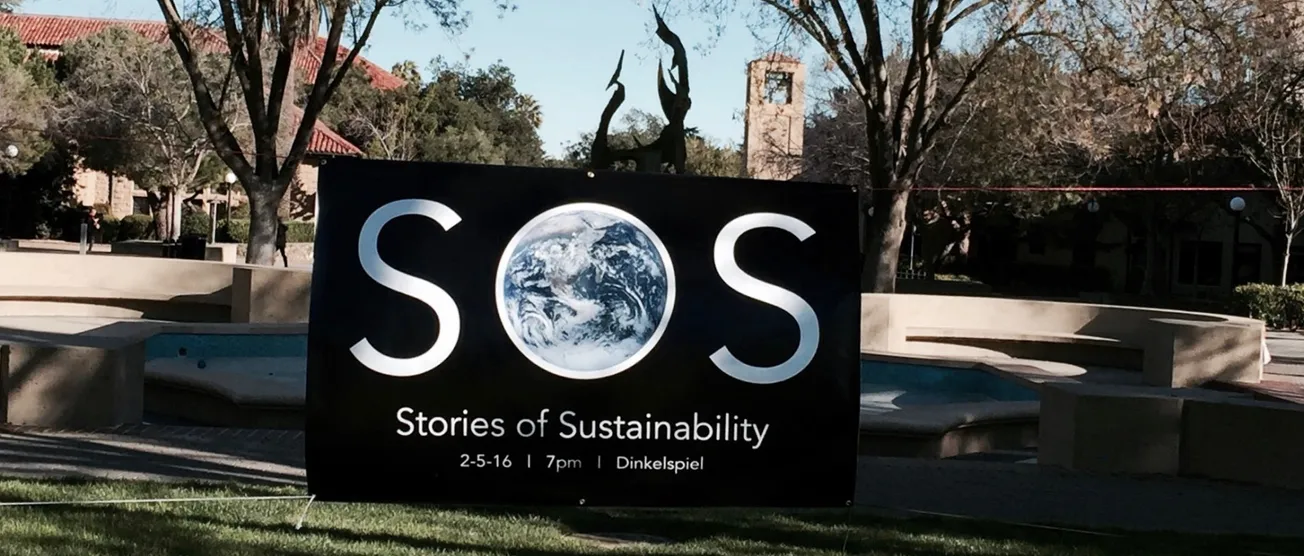Table of Contents
Despite the amount of statistical diversity in Stanford’s student profile, many of us “find our niches” at Stanford by spending time with people similar to ourselves. Truly taking advantage of Stanford’s diversity requires actively breaking out of these intellectual bubbles and surrounding ourselves with the unfamiliar.
Two weeks ago, I went to Stories of Sustainability (SOS), an event hosted by the ASSU Executive Committee on Sustainability to tell the stories of the low-income communities that “disproportionately bear the burdens of pollution, climate change, water scarcity, and other environmental issues”, and of the “resilient people rewriting those stories.” It was enlightening to hear about how specific individuals and communities have been affected by climate change.
SOS featured four student speakers who described environmental and class-related hardships that they had personally experienced or witnessed, along with related poetry performances from the Spoken Word Collective. Various music and dance groups also performed, many of whom made some effort to relate their performances to the theme of environmental hardship; for example, Talisman performed a Chinese song and introduced it by talking about pollution in China. I was particularly impressed by the speakers, who shared intensely personal narratives about some of their most significant life experiences, from losing a home to Hurricane Sandy to helping build water infrastructure in rural Nepal.
I was also surprised and disappointed at how my mindset toward these narratives had changed during my time at Stanford. The last time I remember attending an event like SOS was during NSO a year and a half ago, when I felt awed after hearing about my peers’ life experiences, especially those who came from less privileged backgrounds than I had. As a sophomore now, though, I somehow find myself with very few friends from low-income or underprivileged backgrounds. Surrounded by middle- or upper-class friends (many of whom enjoy discussing emotionally-charged activist movements from a very detached, logical standpoint) for the past year, I became distanced from these underprivileged narratives. As my memories of individual stories faded or blended together, I unconsciously began to simply dismiss terms such as “oppression”, “injustice”, and “resilience” as overused buzzwords.
We often tout the ideas of “finding your niche” at Stanford and joining some community where you feel comfortable. After freshman year, it’s natural to fall into the pattern of living with a pre-selected draw group, struggling through problem sets with the same study group, and spending weekends rehearsing with the same acapella group. Moreover, as I’ve progressed through Stanford, it’s been increasingly easy for me to stay within the boundaries of these communities. The problem is that I, like so many others, have connected with most of these communities over our similar interests, goals, beliefs, and/or cultural backgrounds. Despite valuing diversity so much at Stanford, many of us end up self-segregating such that the people in our friend groups are remarkably similar to ourselves.
While this might keep us comfortable and happy, it can also be toxic in terms of personal and intellectual growth. We’re all heavily influenced by the people who surround us; motivational speaker Jim Rohn even goes so far as to say, “You are the average of the five people you spend the most time with.” Spending our formative college years with people who are similar to ourselves tends to only solidify our existing identities and beliefs. Being surrounded by people with different outlooks and lifestyles, however, forces us to think critically about ourselves and (hopefully) grow as a result. Moreover, on an intellectual level, it’s crucial to understand the perspectives of as many people as possible in order to become informed and open-minded citizens.
Although I technically meet people from a wide variety of backgrounds through classes or various events, it’s rare actually to connect with people through classroom interactions or casual conversations. I appreciate that the performers at SOS seemed committed to sharing important personal narratives, whether through speech, dance, or music, and giving strangers in the audience a chance to empathize and connect with them as individuals.
Examining my own reactions to the SOS performances showed me how spending time in insular groups has colored the way I perceive underprivileged narratives. It has prompted me to be more aware of the kinds of people with whom I choose to surround myself. However, I think that this problem of getting sucked into bubbles within Stanford extends to students of all backgrounds. Some people who spend a lot of time in activist circles, for example, seem to have an analogous problem of embracing minority perspectives while prematurely dismissing others as coming from an ignorant place of privilege.
At the end of the day, statistical diversity in the Stanford Undergraduate Student Profile can only mean so much. Unless we make active efforts to leave our niches and connect with unfamiliar people and environments, we aren’t actually reaping the benefits of being part of a diverse undergraduate population.





